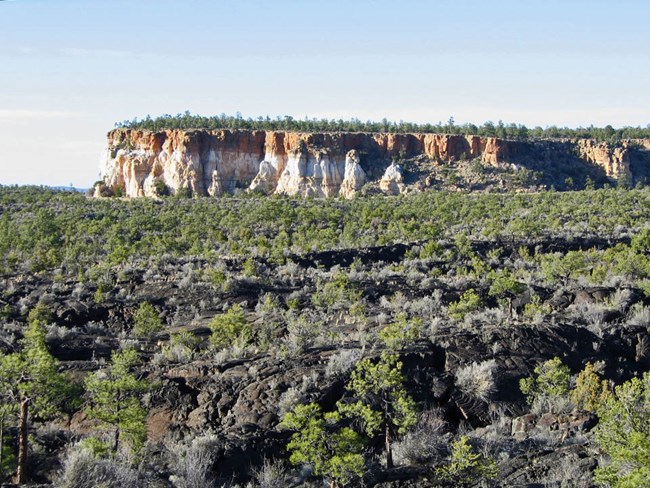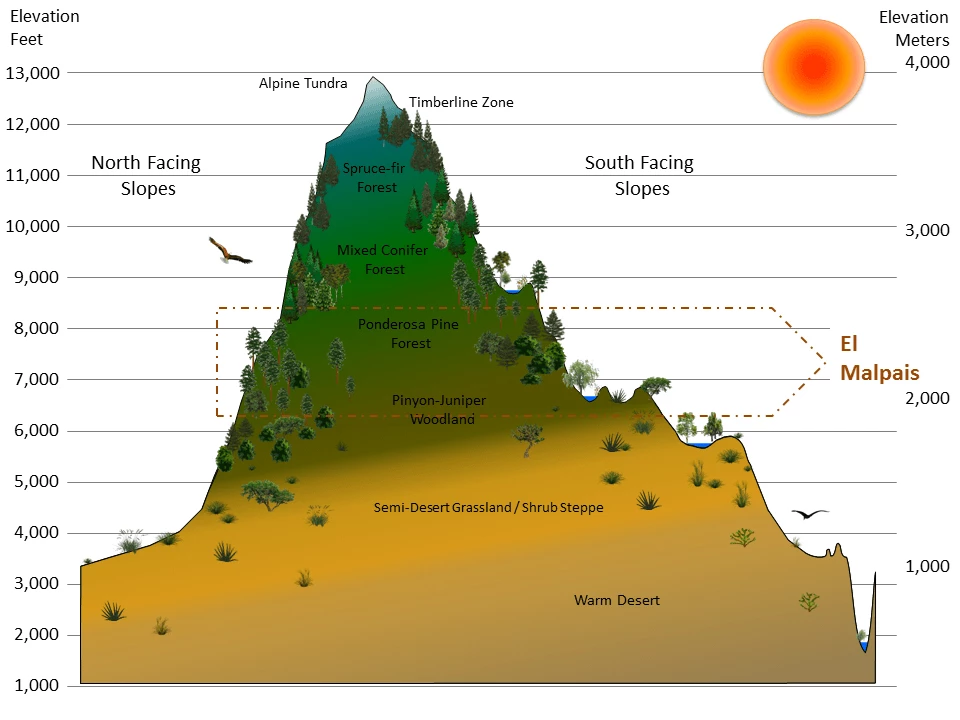
NPS / SCPN
El Malpais National Monument encompasses 115,049 acres (46,559 ha) in west-central New Mexico, in one of the most significant volcanic areas in the U.S. It was established in 1987 to protect outstanding natural and cultural resources. Natural resources include eleven volcanoes, lava tubes and other cave systems; of particular interest are ice caves which are a repository of paleo-climatic information.
Cultural resources in the park range from artifacts and ancient dwelling sites from the Paleoindian Period, the Archaic Period, and the Ancestral Puebloan Period to historic records of tribal and Spanish settlements.
Seven major vegetation communities are found in El Malpais NM, but the most dominant types are ponderosa pine forests and pinyon-juniper woodlands.
El Malpais NM supports 10 amphibian, 208 bird, 71 mammal, 27 reptile, and over 100 invertebrate species. Water resources consist primarily of a large reservoir of subsurface water. The lava flows of El Malpais NM are contained within a closed basin and all precipitation entering the area is either used by vegetation, collects in small ponds and tinajas, or sinks into the lava flow and enters the groundwater system.
Select a Park:
Select a Species Category (optional):
Visit NPSpecies for more comprehensive information and advanced search capability. Have a suggestion or comment on this list? Let us know.
Life Zones
El Malpais NM ranges in elevation from 6,396 to 8,377 feet (1,950-2,554 m) and spans the Semi-Desert Grassland/Shrub Steppe, Pinyon-Juniper Woodland and Ponderosa Pine Forest life zones. The monument experiences an average annual precipitation of 10.5 inches (266 mm).

Climate Summary Chart
Charts are an effective way to summarize and graphically represent climate variables. The following chart is based on the diagrams developed for vegetation studies by Walter and Lieth in 1967. Visit our climate page for more information.

Reports & Publications
Inventories are point-in-time surveys that help us learn about the resources in our parks. Information obtained through the Southern Colorado Plateau Network’s inventories of park resources helped to establish a base level of data, which has served as a starting point for our natural resource monitoring.
Source: NPS DataStore Saved Search 3515 (results presented are a subset). To search for additional information, visit the NPS DataStore.
Source: NPS DataStore Saved Search 3280 (results presented are a subset). To search for additional information, visit the NPS DataStore.
Last updated: October 21, 2022
